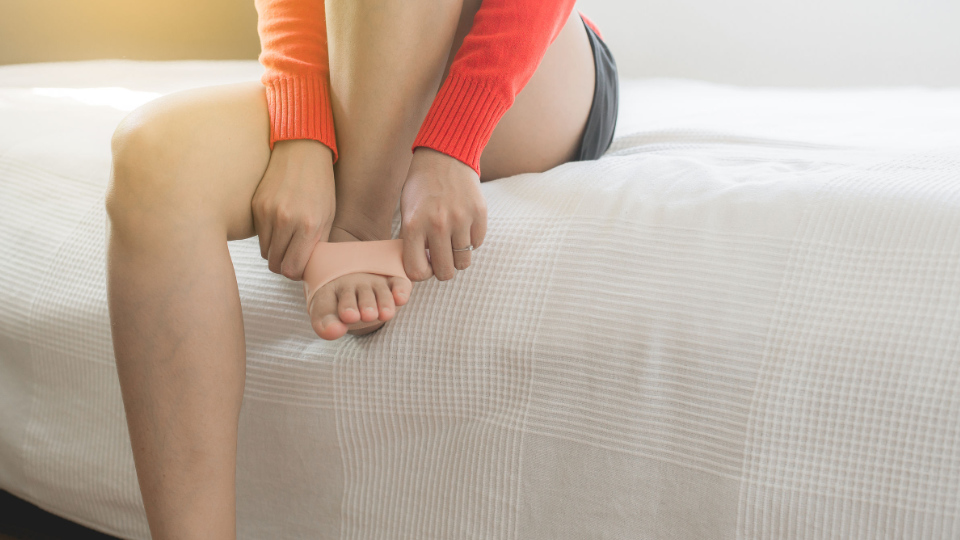Running is the simplest exercise for everyone. What you need is just a pair of shoes and a treadmill or open road. If you are new to running, by now you should know that running provides tons of benefits.
If you are a new runner, you might experience running injuries at the beginning of your running journey. So, it is important to learn a few basics on injury prevention to help you to run better. The most common injuries for beginners are shin splints, runner’s knee, Achilles tendonitis, and plantar fasciitis.
Let’s take a closer look at these common injuries and how to prevent them:
Runner’s Knee
Runner’s knee is one of the most common injuries that affect runners. To examine which or what specific structure is the source of the pain, do visit a therapist or doctor and find out which specific structures and see what hurts. They can give you a specific treatment plan to treat a knee injury.
Shin splints

The causes of shin splints is stress on your shinbone and the connective tissues that attach muscles to your bones due to weak ankles, hips or core muscles, working out without warm up or cool down stretches and shoes that do not provide good support.
Here are ways to treat shin splints:
- Rest your body and give it time to heal.
- Ice your shin to ease pain and swelling. Do it for 20-30 minutes every 3 to 4 hours for 2 to 3 days, or until the pain is gone.
- If your pain does not go away, visit your doctor and get treated properly.
Achilles Tendonitis
Do you ever feel a sharp pain in your calf when you are running? If you do, it could be a sign of Achilles tendonitis, which presents when the ankle hasn’t been moving enough. To treat Achilles tendonitis, you can visit a physical therapist who will suggest the following treatment:
- Exercises, a specific stretching and strengthening exercises called “eccentric” to promote healing and strengthening of the Achilles tendon.
Plantar Fasciitis

Plantar fasciitis is another common running injury. It will irritate the thickest layer of tissue, called the fascia, at the bottom of your foot. Most runners who have plantar fasciitis recover in several months with treatment, including resting, icing the painful area and stretching. Stretching and strengthening exercises or using special devices may help relieve symptoms:
- Physical therapy
A physical therapist will show you a series of exercises to stretch the plantar fascia and Achilles tendon that help to strengthen lower leg muscles.
- Night splints
Your physical therapist or doctor might recommend you to wear a splint that stretches your calf and the arch of your foot while you sleep. This will promote stretching in a lengthened position.
Here are a few tips on how to avoid getting injured during your run:
Slow down
Do not rush yourself to the end of the run. Instead, run slowly and let your body adapt to your pace. Gradually, your muscles will become stronger and have better endurance. You will have a stronger heart and lungs. Eventually, your body systems will adapt to your running pace.
Also, it is completely normal that your body and muscles will be sore for a few days after your first run. What you can do is to do a light stretch and use a foam roller to massage, as it helps to relax your muscles.
Running routine for beginners

You can start off with a 5k run and ramp up slowly to avoid any injuries. Begin with warm ups, then start walking and add in a light jog in your comfortable pace. If you feel jogging or running is too overwhelming for you, then stick to walking. On the other hand, you can also incorporate strength training, such as squat and lunges, to build up strong muscles, as it helps you to adapt to running.
Do keep in mind that doing too much will be difficult to maintain and put yourself at risk of getting an injury. You should increase the number of km each week gradually if you feel comfortable doing so.
Running about two to three times a week should improve your fitness, but make sure you get enough rest. Set a rest day between your runs to allow your body to adapt to your new routine.
No fancy running shoes needed
The right shoes for you are the ones you already have. Just wear a pair of regular running shoes, and you are good to go unless your current running shoes do not support your ankle or arch during your run. Then, you might consider changing to a new pair of running shoes.
It does not matter if it’s the top-of-the-line model recommended by a store employee. As long as the shoe makes your feet feel good and comfortable when you run.
Don’t ignore pain
Pain is your body telling you that you are running poorly, which in almost every case equates to running slowly. If you are experiencing sharp pain during your run, we do not recommend you to further your run; instead, listen to your body and take a rest or visit a doctor for proper treatment. If not, your body will lead to serious injuries.
Plan out your run

No matter how fit you are, it is important to start slow to build your stamina to let your body get used to it. If you do not know where to start, here are some simple steps for you:
- Keep it regular
Be consistent and make it a habit.
- Make a plan
Plan your schedule ahead. Write down your cues and rewards and post your plan somewhere you can see it.
- Build a support system
Running with your friends can make you motivated and, most importantly, support each other during the process.
- Choose a training plan
You can do research online to execute your plan, but we believe in keeping it simple for beginners. Here is a simple training plan for you:
- Run two to three days a week
- Run or walk 20 to 30 minutes
- Take a longer run or walk for about 40 minutes to an hour once a week
- Rest on your off days
- Run at a conversational pace
Be patient and consistent. Most of all, have fun and explore every step of the way during your running journey.
What are the most common injuries in running?
The most common injuries for beginners are shin splints, runner’s knee, Achilles tendonitis, and plantar fasciitis.
Do running shoes prevent injury?
Yes, wearing the right running shoes help to support your ankle and reduce the risk of injury.
How do I stop getting injured when running?
Always perform warm-up and cool down. Take it slow, create a simple running plan, keep it consistent, rest well on off days, and most important be patience.
Should I run through pain?
It is best advice to stop running if you experience sharp pain during your run to avoid any serious injuries; instead, listen to your body and take a rest or visit a doctor for proper treatment.





